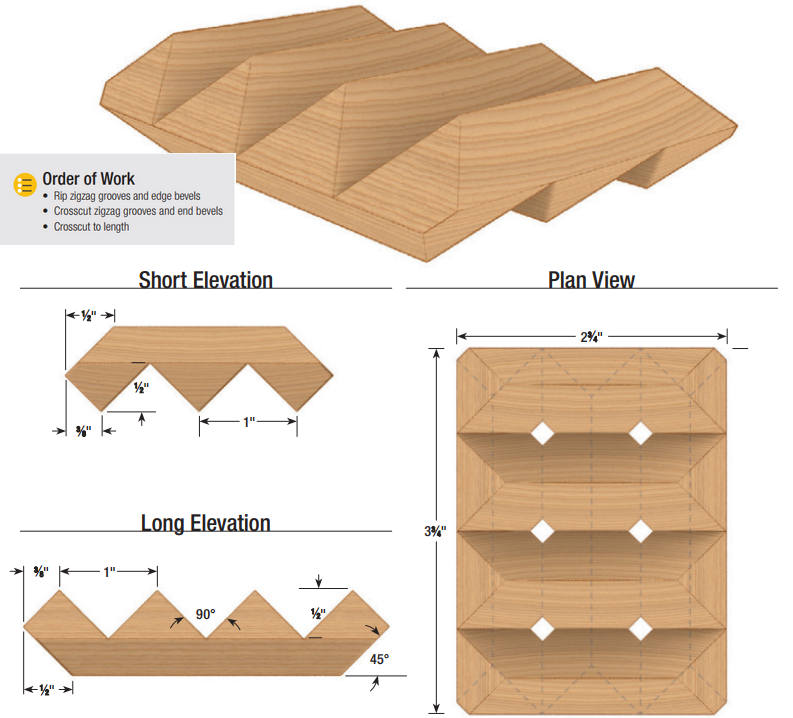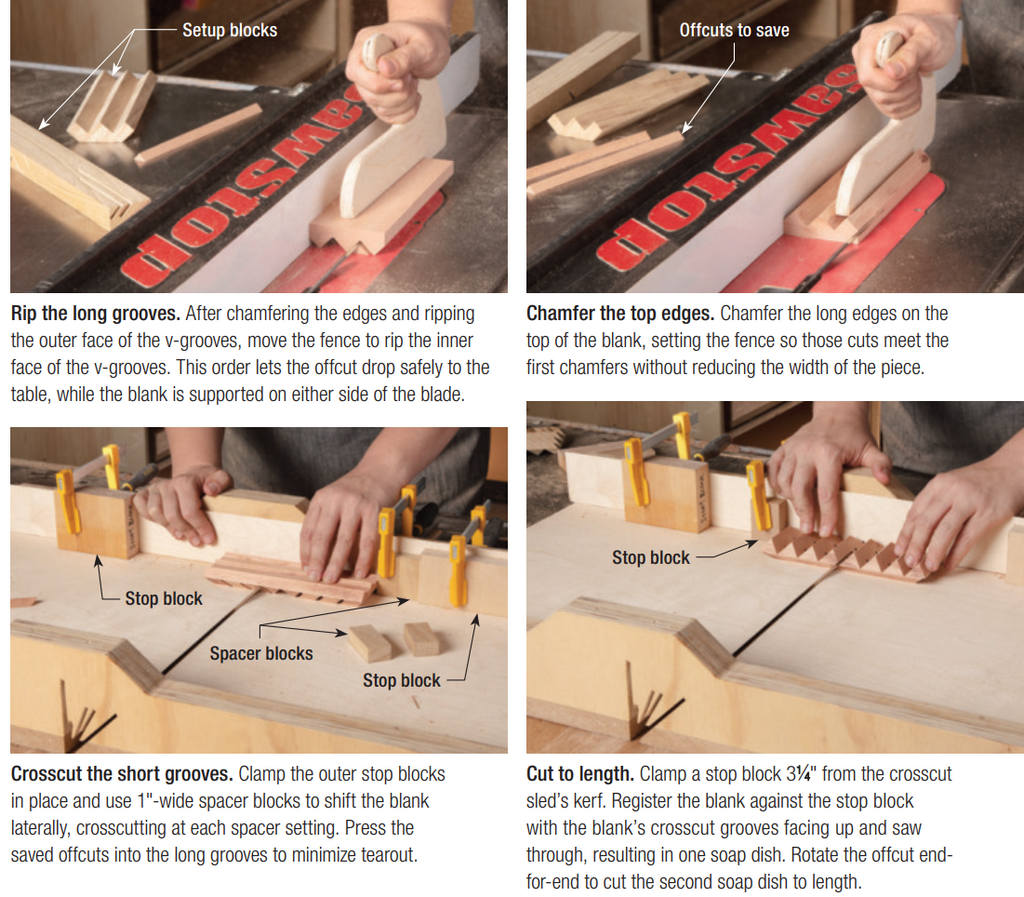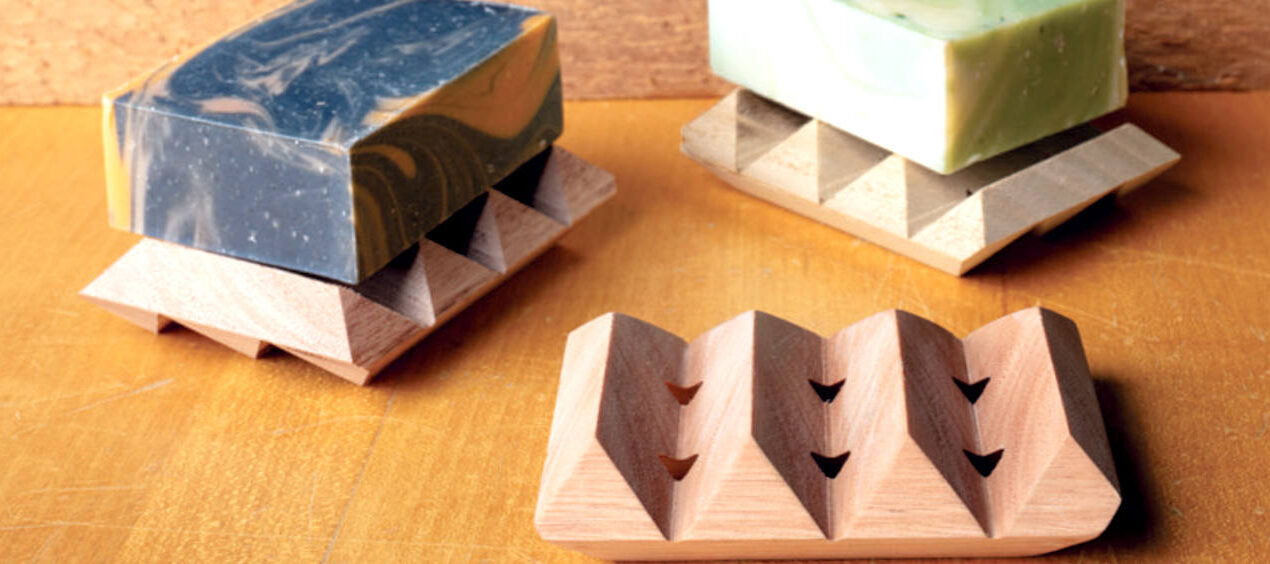By Sarah Marriage
Every woodworker faces that perennial question of what to do with all those wood scraps too small for most projects but just a bit too large for the bum bin. After a little experimentation, these zigzag soap dishes were born of this question.
Over the years I’ve made many different versions of these using various techniques on a variety of machines, and I’ve arrived at asleek process that is simple and repeatable. It starts with an overlong blank and results in two complete soap dishes. After dressing the initial blank, every step of this project is a 45° cut at the table saw. The key is spacing these cuts correctly.
You can use just about any scrap wood, but I prefer water-friendly woods like cedar or acacia. Denser woods add a little weight to the feel of the dish, so black locust or osage orange are top choices as well. I used a traditional soap finish for moderate protection and a soft sheen.

Criss-cross grooves for a design that drains
Table sawn v-grooves are cut along the grain on one side of the dish, and across the grain on the other side. The intersections of these grooves create convenient drainage holes for soapy water, and the zigzag design allows for plenty of airflow around the dish and under the bar of soap.

Rip, crosscut, and finish
Start with an overlong blank of ⅞ x 2¾ x 7¾”. Set the table saw blade to a 45° angle, then raise it to a ½” height. Rip a ⅜” chamfer on one edge of the blank. Rotate the blank end-for-end and chamfer the other edge. Move the fence 2″ closer to the blade and rip a kerf. Rotate the blank again and rip another kerf. Move the fence 1″ further from the blade and rip another kerf before rotating and ripping one final time as shown. Save these two offcuts for later use. Chamfer the top edges as shown.
Set up a crosscut sled with a zero clearance bed for 45° cuts. Clamp a stop block 7⅜” to the right of the zero-clearance kerf and another stop block on the opposite side of the blade 14¾” away from the first. Place four 1″ spacers against the right stop block, clamping the spacer closest to the blade. Raise the blade to ½” above the sled’s bed. Register the blank against the clamped spacer with the ripped grooves facing upward and make the crosscut. Rotate the blank end-for-end and make another cut. Remove the clamped spacer and move the clamp to the next spacer. Register the blank against this spacer and make a cut. Rotate the blank end-for-end and make another cut. Repeat this process until all the spacers are gone. Then place two 1″ spacers against the left stop block and repeat the process in that direction.
Flip the blank over and crosscut a ½” chamfer on each end. Clamp a stop block 3¼” to the right of the kerf and cut the first soap dish to length. Rotate the remaining portion of the blank end-for-end and cut the second soap dish to length. Sand and finish.

